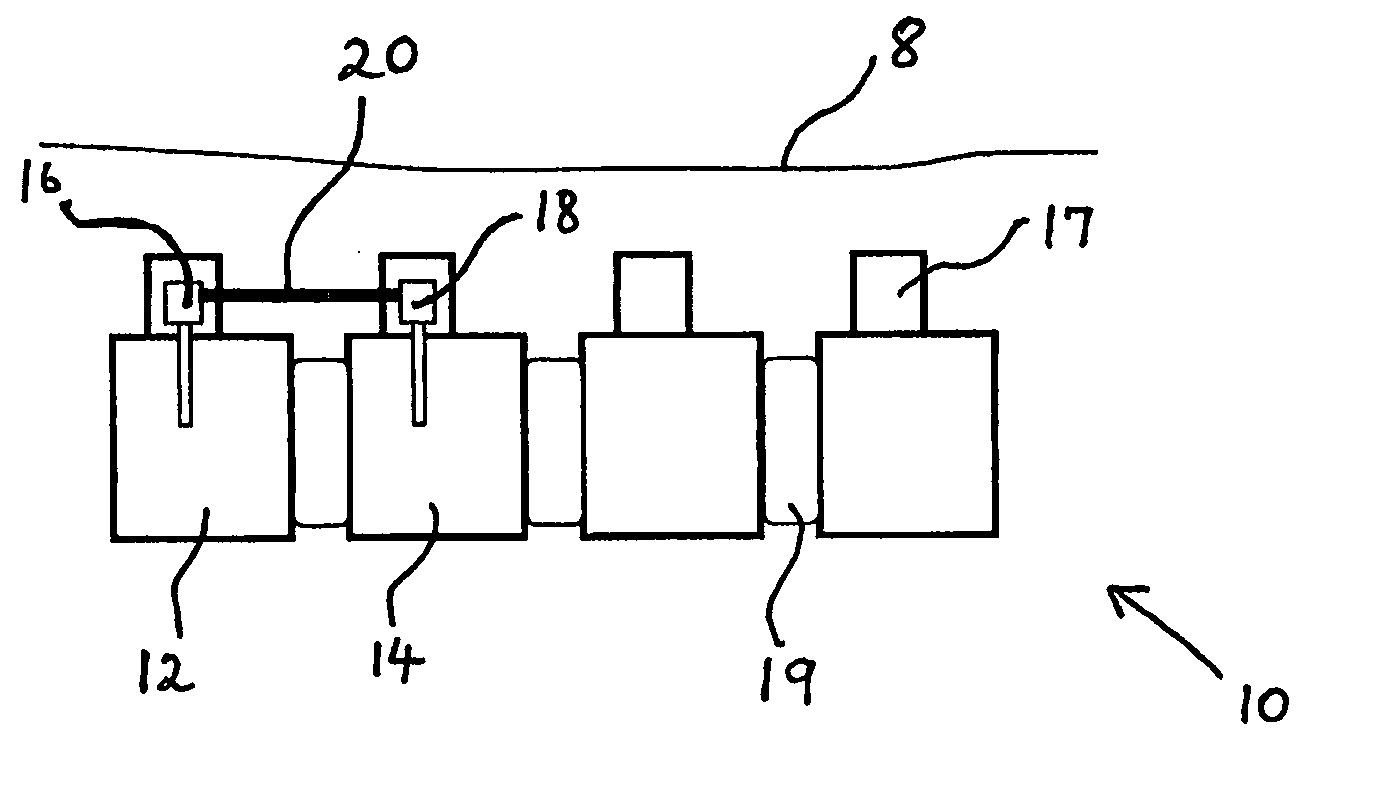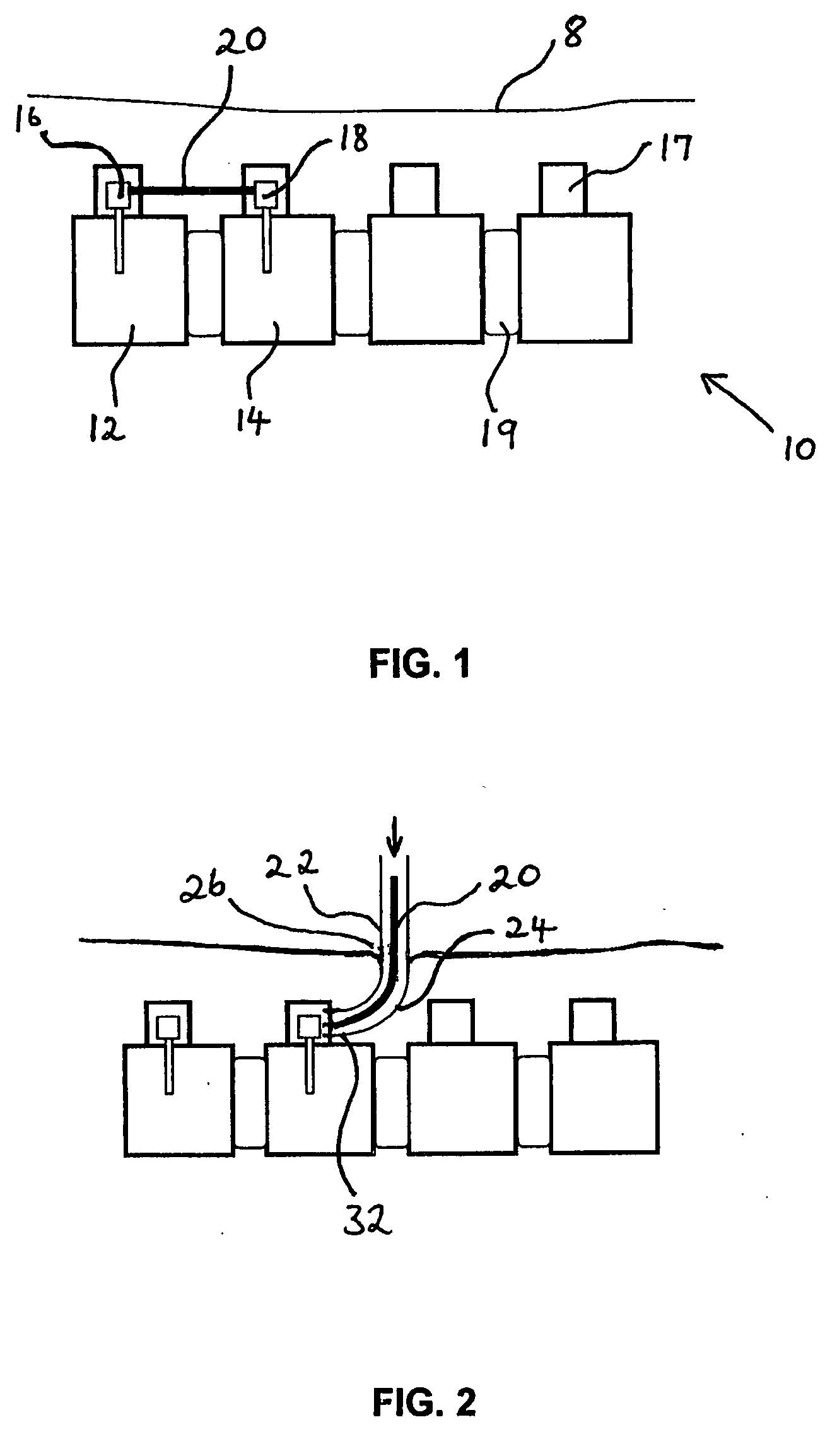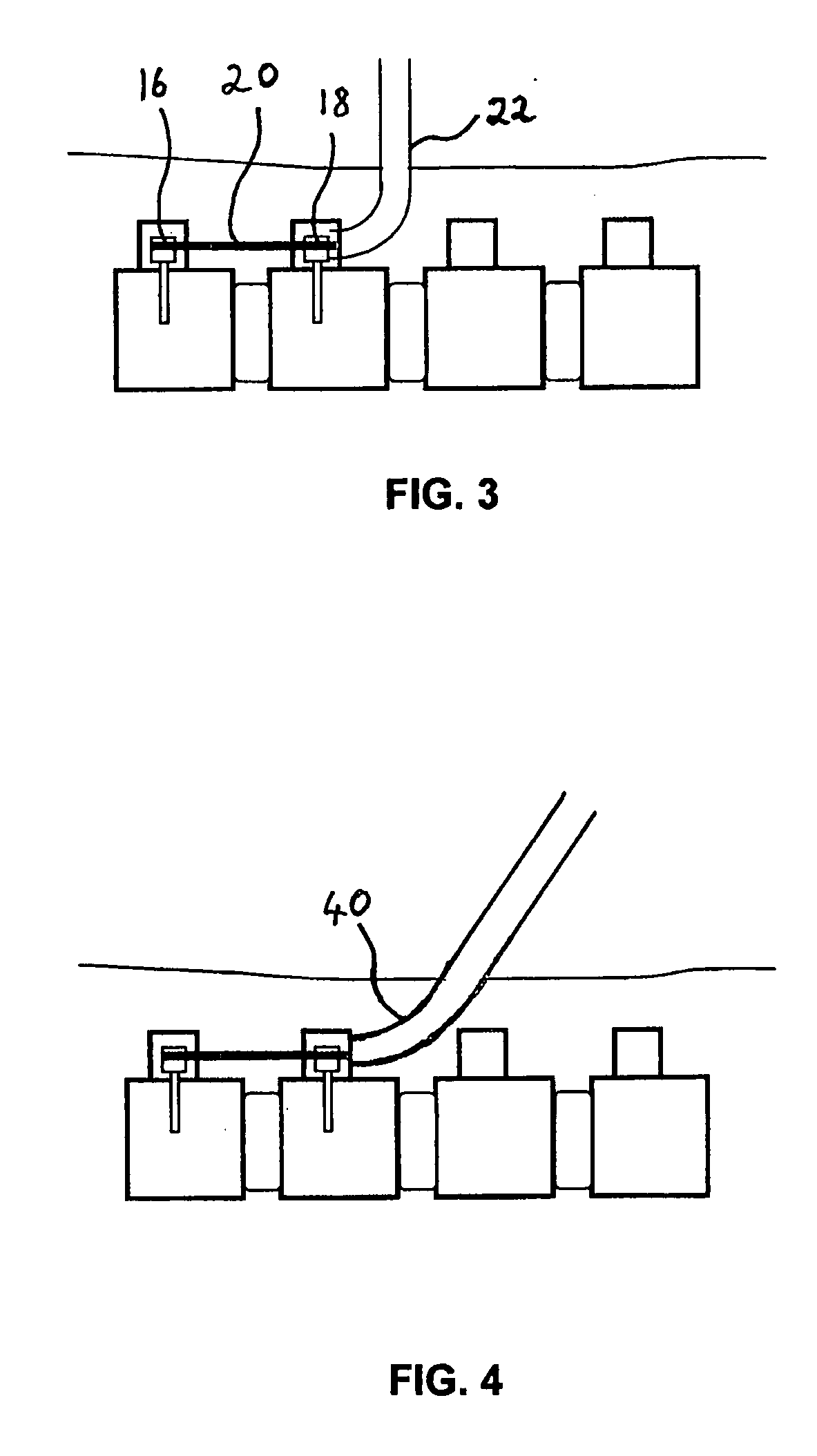[0009] The present invention seeks to provide a new method and apparatus by which
spinal fusion can be performed in a manner
less invasive than possible using the above-described prior art methods. According to the present invention, use is made of vertebral connecting rods made of a material which changes its rigidity as a function of temperature, with the change taking place in a temperature region just below that of body temperature. One such group of materials is known as Shape Memory Alloys (hereinafter abbreviated to SMA), whose crystalline structure undergoes a
phase change from austenitic to martensitic when cooled through the range of temperatures over which the phase transformation occurs, and vice versa as the material is heated up over the
transition temperature range. In the austenitic phase, SMA's have rigid properties, with good material strength. In the martensitic phase, SMA's are readily deformable, the level of flexibility depending on the particular SMA used. While in the martensitic phase, such SMA materials can be readily bent into shapes very different from their original shape. In addition, such materials show shape memory, in that, regardless of the shape into which the material is bent below its
transition point, it will return not only to its original rigidity when its temperature rises above the
transition temperature, but also to the original shape into which it was annealed before being cooled. The
phase change from martensitic to austenitic phase (and vice versa) can be selected to be somewhat below body temperature, or even below
room temperature, depending on the particular SMA composition chosen.
[0010] In order to use the vertebral
fusion system of the present invention, pedicle screws are first inserted into the relevant vertebrae, in a minimally invasive manner. Then, in accordance with a preferred embodiment of the present invention, a
curved tube is inserted into an incision in the patient's back, until its inserted end is located close to one of the
pedicle screw heads to which the connecting rod is to be attached. The tube can be inserted through an opening no larger than the
diameter of the tube, such that the incision can be small. A connecting rod made of an SMA material, and cooled to below its
transition point, is inserted down the tube, and, because of its flexibility below its
transition point, readily negotiates the curved end of the tube, to exit the tube in a direction essentially parallel to the spine. Once it has exited the delivery tube, the SMA rod heats up by contact with the
body tissue around it, switches phase to its rigid state, and at the same time, regains its original straight form as a result of the shape
memory effect. Once in this state, it can be pushed through the tissue and
muscle between the vertebrae after exiting the end of the tube, until it reaches its final intended position between the
pedicle screw heads. It is then attached to the pedicle screw heads preferably in the conventional manner using set screws, and the
insertion tube is then withdrawn. The delivery tube is preferably left in position until after the connecting rod has been firmly attached to the pedicle screws, in order to provide additional support to the rod during the tightening procedure.
[0012] In using the vertebral
fusion system of the present invention, only small incisions are required either side of each
vertebra for inserting the pedicle screws. According to one preferred embodiment, the curved delivery tube can be inserted through this same incision, and maneuvered into its correct position by stretching the tissue around the incision hole to get to the correct position for delivery of the connecting rod. According to another preferred embodiment, an additional
small incision is made near each pedicle screw insertion incision, and the delivery tube inserted through this additional hole. Thus, according to either of these embodiments, the invasiveness of the procedure is substantially reduced, even compared to the above-mentioned minimally invasive methods.
[0040] There is further provided in accordance with yet another preferred embodiment of the present invention, an insert for implanting in the body of a subject, the insert comprising a shape memory material, and wherein the insert has a final shape after insertion in the body essentially the same as its shape before insertion. The shape memory material is preferably such that the flexibility of the insert is increased during insertion, such that the insert changes its shape during insertion.
[0045] (iv) allowing the insert to regain its predefined shape within the body of the subject. Furthermore, according to this method, the change of temperature of the insert is preferably such that the rigidity of the insert decreases, the decreased rigidity enabling the predefined shape to change during insertion.
 Login to View More
Login to View More  Login to View More
Login to View More 


